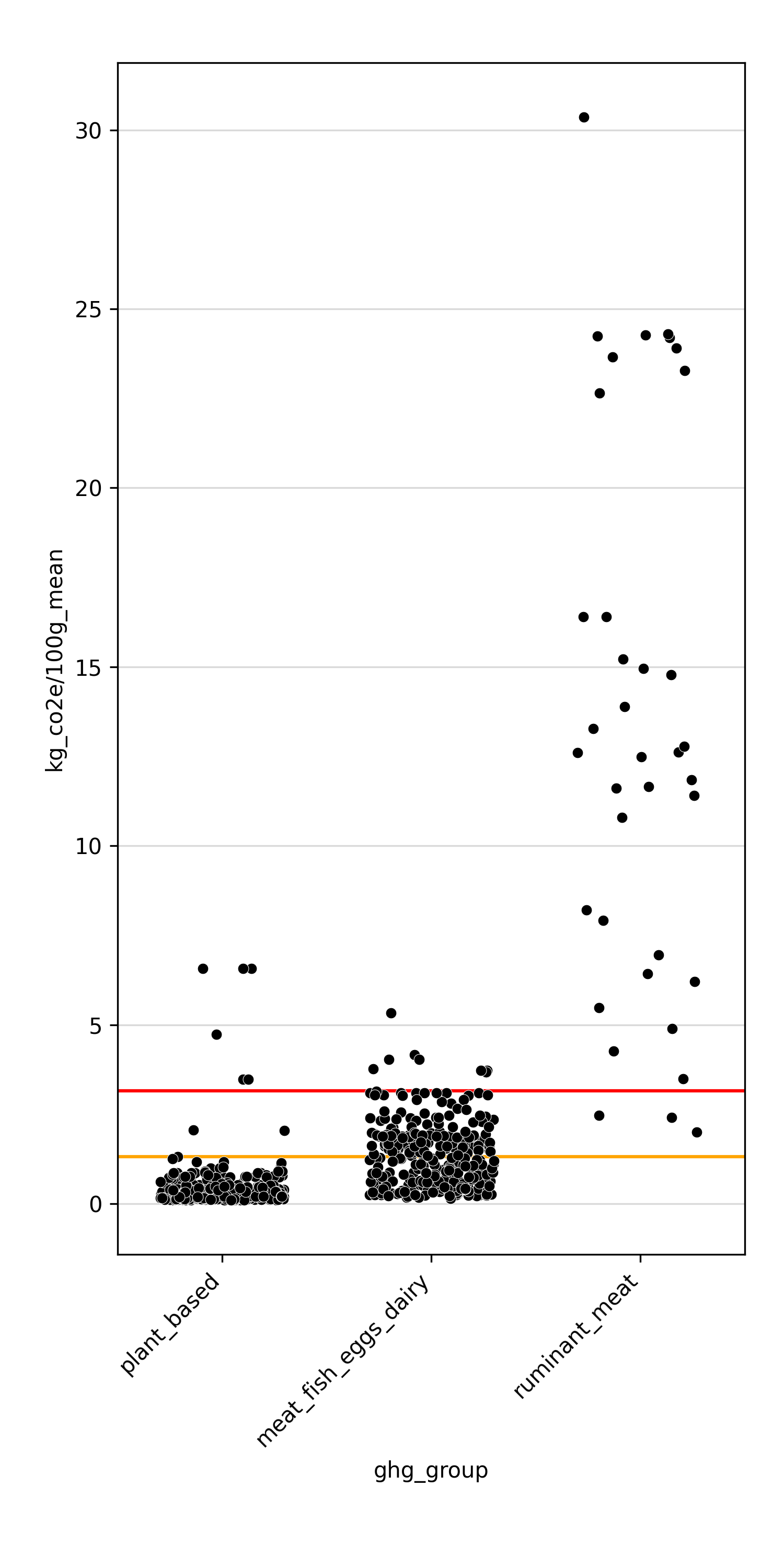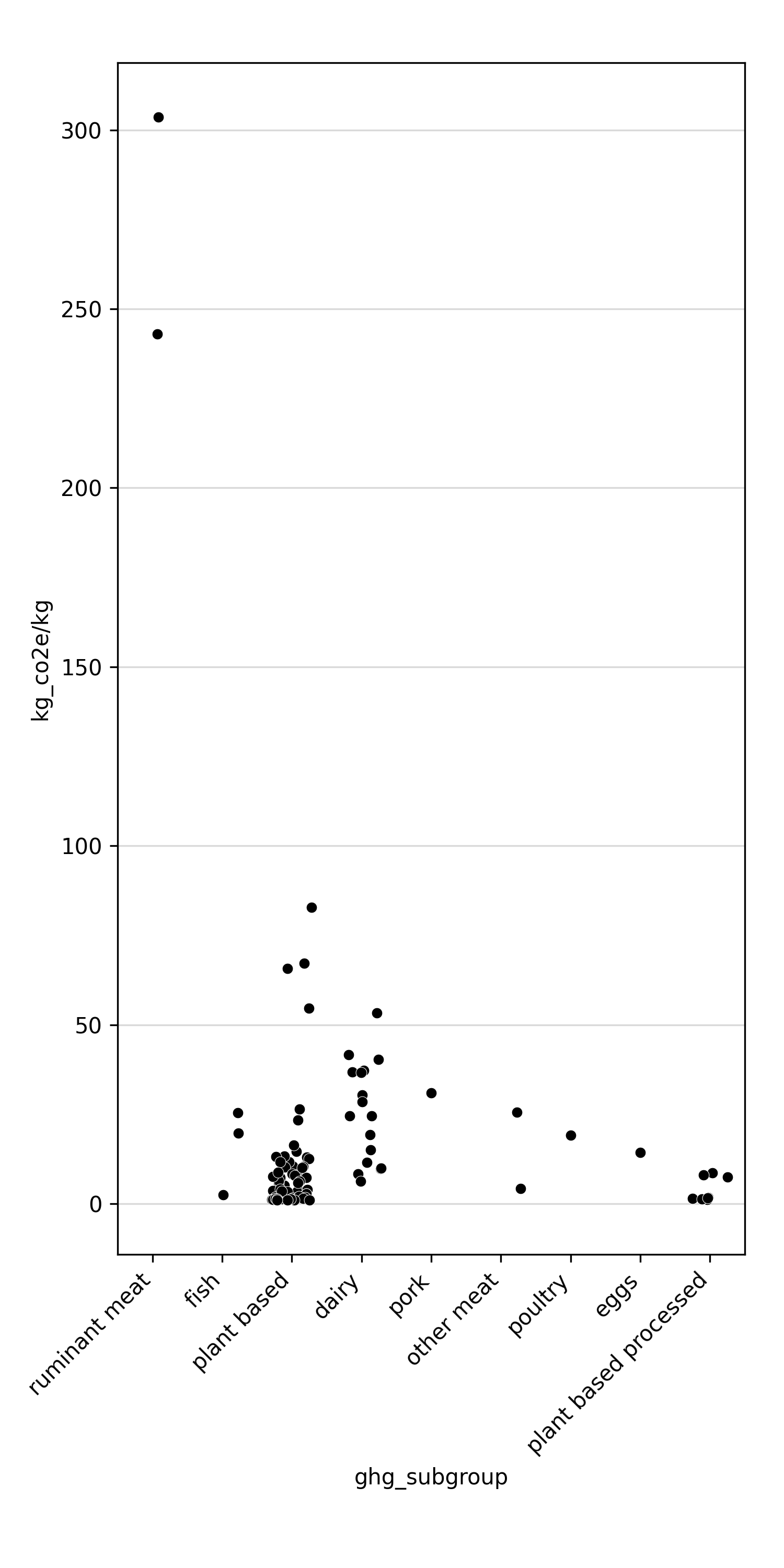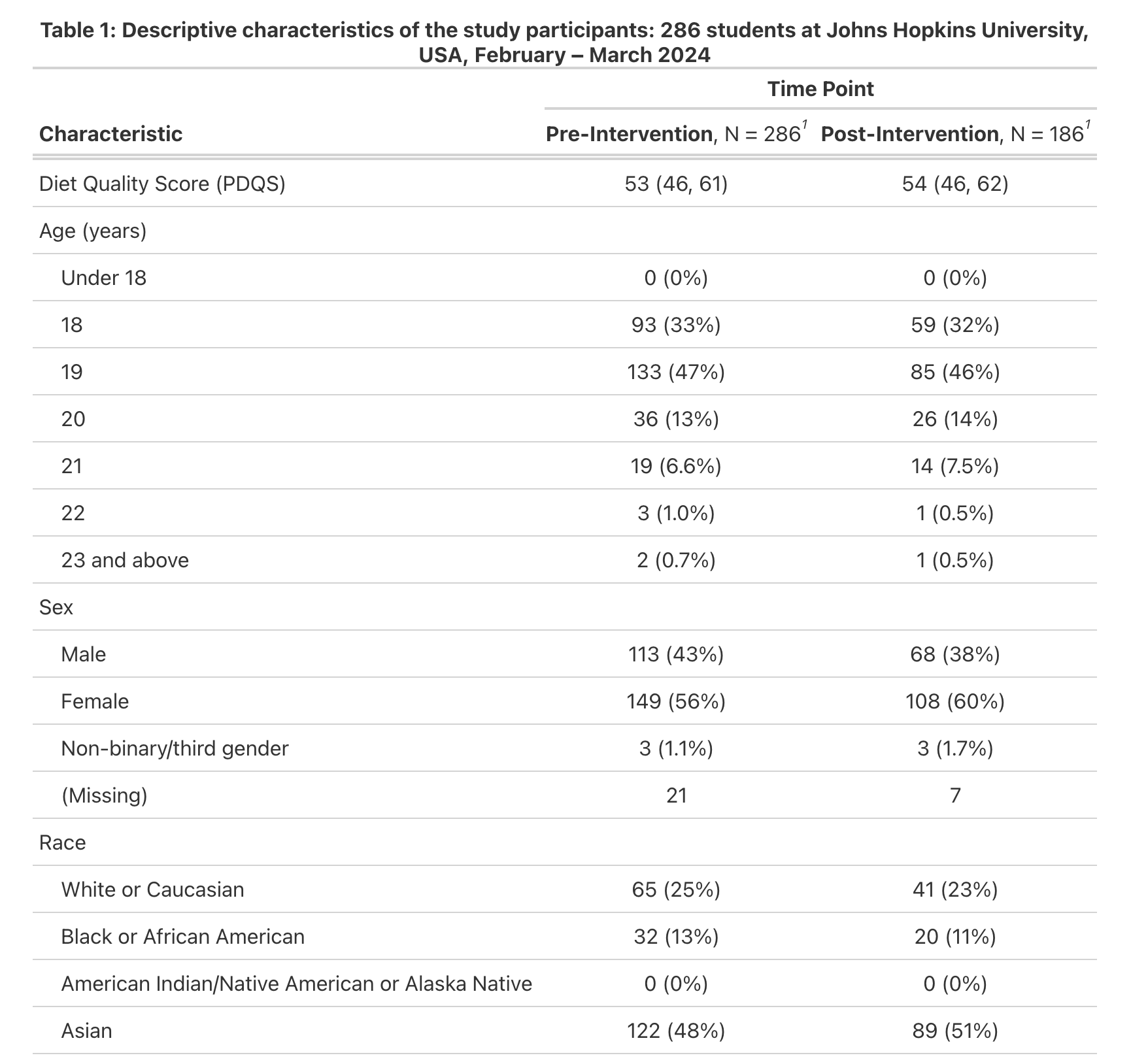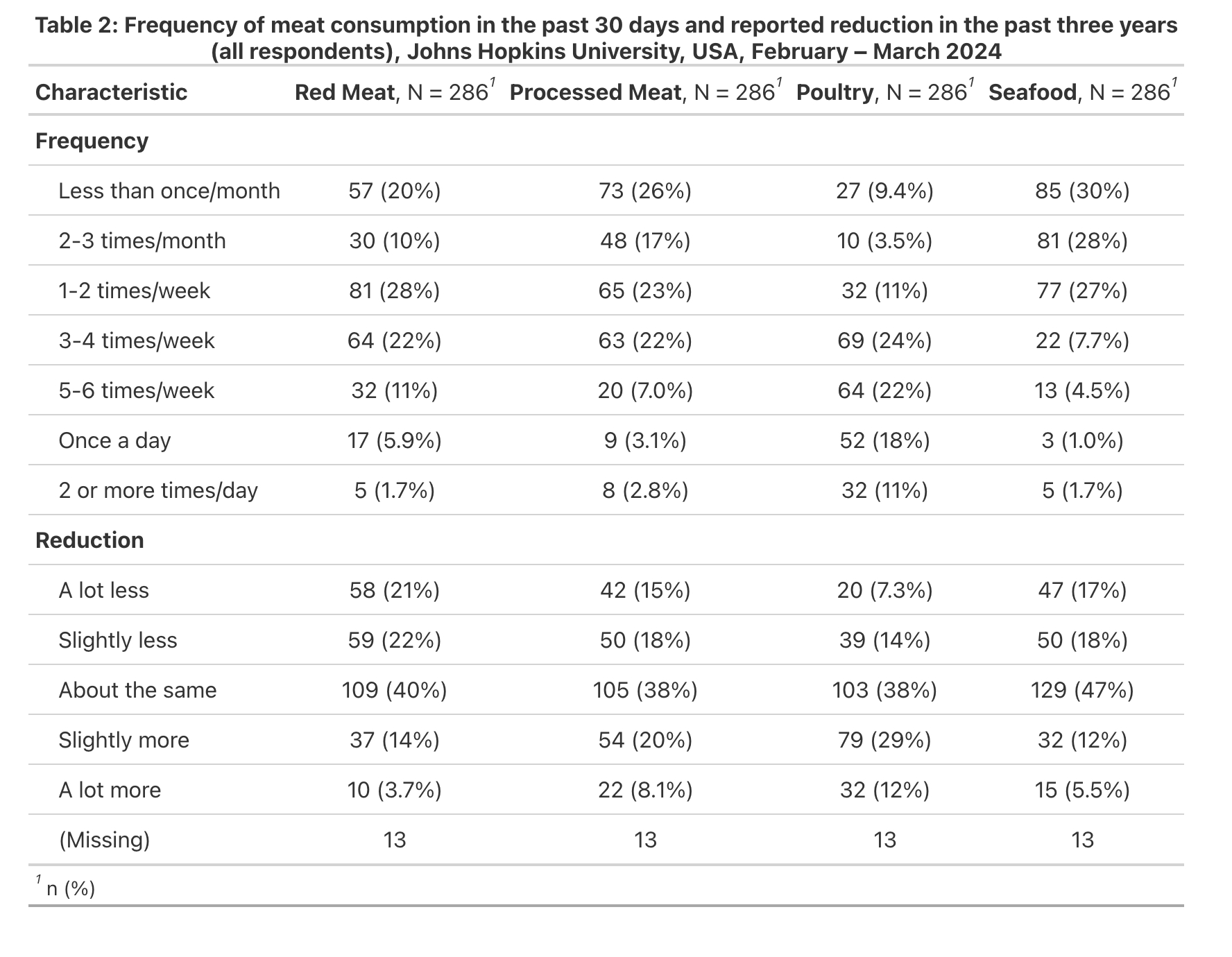Challenge
From the study: “Climate change is a critical public health threat that requires urgent action. The global food system, from production to waste, accounts for about one-third of all greenhouse gas emissions (GHGE). Meat from cattle (33%), dairy (19%), and other animal meats (9%) contribute over 60% of the projected global temperature rise from food systems by 2030. Reducing red meat and dairy consumption in high-income countries like the U.S., where intake far exceeds dietary guidelines, is essential. Universities offer an influential hub to drive this change by influencing student behavior through their dining services. Johns Hopkins Center for a Livable Future implemented climate labels in dining hall menue to encourage students to choose lower-GHGE foods, but their effectiveness, particularly in university settings. Targeting Generation Z students, who are more inclined towards plant-based diets, the center’s study aimed to assess the impact of climate change menu labels on promoting sustainable food choices and reducing climate anxiety.”
My role was to collect recipes and all ingredients for the study, and co-develop a model for calculating greenhouse gas (GHG) emissions of recipes over a four-week period in two dining halls at a private university in Maryland.
Approach
The code on GitHub is stored in a private repository and cannot be shared publicly due to proprietary data.
I worked with a colleague to pull out all 650+ menu items and their 26,277 ingredients using Python. We matched each ingredient to one of the Cool Food Calculator's categories and calculated its greenhouse gas emissions, then summed those emissions for each recipe. To set our climate-impact labels, we plotted every recipe's total emissions in a strip plot and looked for natural breaks in the distribution—these breaks gave us clearer cutoffs than standard methods like tertiles or k-means. Finally, I helped turn those cutoffs into green, yellow, and red labels so we could easily see which recipes had low, medium, or high climate impact.
The code on GitHub is stored in a private repository and cannot be shared publicly due to proprietary data.
I designed the plan for collecting and analyzing dining ingredient purchases and student survey responses, then gathered, cleaned, and transformed the data from before and after the study. I created tables for publication that summarize participant demographics and key measures of food insecurity, diet quality, and types of foods consumed. I managed the data collection and validation process, collaborating with dining staff to confirm that our variables and methods were accurate. Finally, I ran exploratory analyses to profile survey respondents and outcome measures, and drafted the study's methods section for publication.
Results
Gathering over 600 recipes saved the Center hundreds of staff hours and made our research much more efficient. Key findings:
Purchases stayed about the same before and after the intervention, except for a spike during a special event.
Plant protein intake ticked up slightly, while vegetable intake dipped; overall diet quality didn't change.
About one in three students noticed the climate labels, but most felt neutral and said the labels didn't affect their food choices or concern for climate impact.
Citation
@online{ali2025,
author = {Ali, Elham},
title = {Johns {Hopkins} {Center} for a {Livable} {Future}},
date = {2025-05-01},
url = {https://www.elhamyali.com/},
langid = {en}
}



















